Experimental Analysis of Power Flows in the Regenerative Vibration Reduction System with a Magnetorheological Damper
Abstract
1. Introduction
2. Regenerative Vibration Reduction System with MR Damper
3. Experimental Tests
4. Results and Discussion
4.1. Instantaneous Power Flows
- guiding of the harvester magnet system-The amount of energy dissipated depends on the relative velocity ,
- shaker connection with the reduction system and sprung mass by means of four ball joints with bearings-The amount of energy dissipated by the connection can be omitted due to slight angular displacements,
- guiding plate 1 with two linear bearings-The amount of energy dissipated by the connections depends on friction forces and velocity ,
- guiding plate 2 and sprung mass with six linear bearings-The amount of energy dissipated by the connections depends on friction forces and velocity ,
- ensuring concentricity of motion of the damper, harvester and spring by means of three guide rods permanently attached to plate 1, cooperating with linear bearings placed in plate 2-The amount of energy dissipated by the connections depends on friction forces and relative velocity .
4.2. Energy Flows and Average Power Values
5. Conclusions
- The energy recovered from vibration, converted in the harvester into electricity, can effectively power the MR damper in the RVR-MRD system.
- The amount of electricity recovered is related to the relative velocity and the efficiency of the harvester.
- The introduction of additional elements for voltage conditioning (e.g., rectifier bridge or voltage converter) can improve the value of the parameter .
- An energy source with an average power of is sufficient for the correct operation of the RVR-MRD system. The remaining excess power can be stored for reuse in external energy storage.
- The energy demand supplied by the shaker depends on the frequency and the way the harvester coil and MR damper control coil are connected. For frequencies lower than the RVR-MRD system uses less energy in Case 2, while for frequencies higher than the RVR-MRD system uses less energy in Case 1.
- For a displacement frequency greater than , the amount of recovered energy is sufficient to supply an additional system allowing the MR damper control coil to be disconnected.
- The developed measurement system enables to analyse instantaneous power demand, which can be used to assess the test rig’s correct functioning.
Author Contributions
Funding
Conflicts of Interest
References
- Safaei, M.; Sodano, H.A.; Anton, S.R. A Review of Energy Harvesting Using Piezoelectric Materials: State-of-the-Art a Decade Later (2008–2018). Smart Mater. Struct. 2019, 28, 3001. [Google Scholar] [CrossRef]
- Beeby, S.P.; Tudor, M.J.; White, N.M. Energy Harvesting Vibration Sources for Microsystems Applications. Meas. Sci. Technol. 2006, 17, R175–R195. [Google Scholar] [CrossRef]
- Choi, Y.T.; Wereley, N.M. Self-Powered Magnetorheological Dampers. J. Vib. Acoust. 2009, 131, 4501. [Google Scholar] [CrossRef]
- Chen, C.; Liao, W. A Self-Powered, Self-Sensing Magnetorheological Damper. In Proceedings of the 2010 IEEE International Conference on Mechatronics and Automation, Xi’an, China, 4–7 August 2010; pp. 1364–1369. [Google Scholar]
- Scruggs, J.; Lindner, D.K. Active Energy Control in Civil Structures. In Proceedings of the Smart Structures and Materials 1999: Smart Systems for Bridges, Structures, and Highways. Int. Soc. Opt. Photonics 1999, 3671, 194–205. [Google Scholar]
- Ahamed, R.; Ferdaus, M.M.; Li, Y. Advancement in Energy Harvesting Magneto-Rheological Fluid Damper: A Review. Korea-Aust. Rheol. J. 2016, 28, 355–379. [Google Scholar] [CrossRef]
- Sapiński, B. Experimental Study of a Self-Powered and Sensing MR-Damper-Based Vibration Control System. Smart Mater. Struct. 2011, 20, 5007. [Google Scholar] [CrossRef]
- Snamina, J.; Sapiński, B. Energy Balance in Self-Powered MR Damper-Based Vibration Reduction System. Bull. Pol. Acad. Sci. Tech. Sci. 2011, 59, 75–80. [Google Scholar] [CrossRef][Green Version]
- MR Damper, RD-8048-1, Technical Documentation. Available online: https://www.lord.com (accessed on 30 October 2020).
- Sapiński, B. Vibration Power Generator for a Linear MR Damper. Smart Mater. Struct. 2010, 19, 5012. [Google Scholar] [CrossRef]
- Sapiński, B.; Jastrzębski, Ł.; Gołdasz, J. Electrical Harmonic Oscillator with MR Damper and Energy Harvester Operating as TMD: Experimental Study. Mechatronics 2020, 66, 2324. [Google Scholar] [CrossRef]
- Optical sensor, FT 50RLA, Technical Documentation. Available online: https://www.sensopart.com/en (accessed on 30 October 2020).
- Force Sensor, KMM30, Technical Documentation. Available online: https://wobit.com.pl (accessed on 30 October 2020).
- Snamina, J.; Orkisz, P. Active Vibration Reduction System with Mass Damper Tuned Using the Sliding Mode Control Algorithm. J. Low Freq. Noise Vib. Act. Control 2020, 4257. [Google Scholar] [CrossRef]
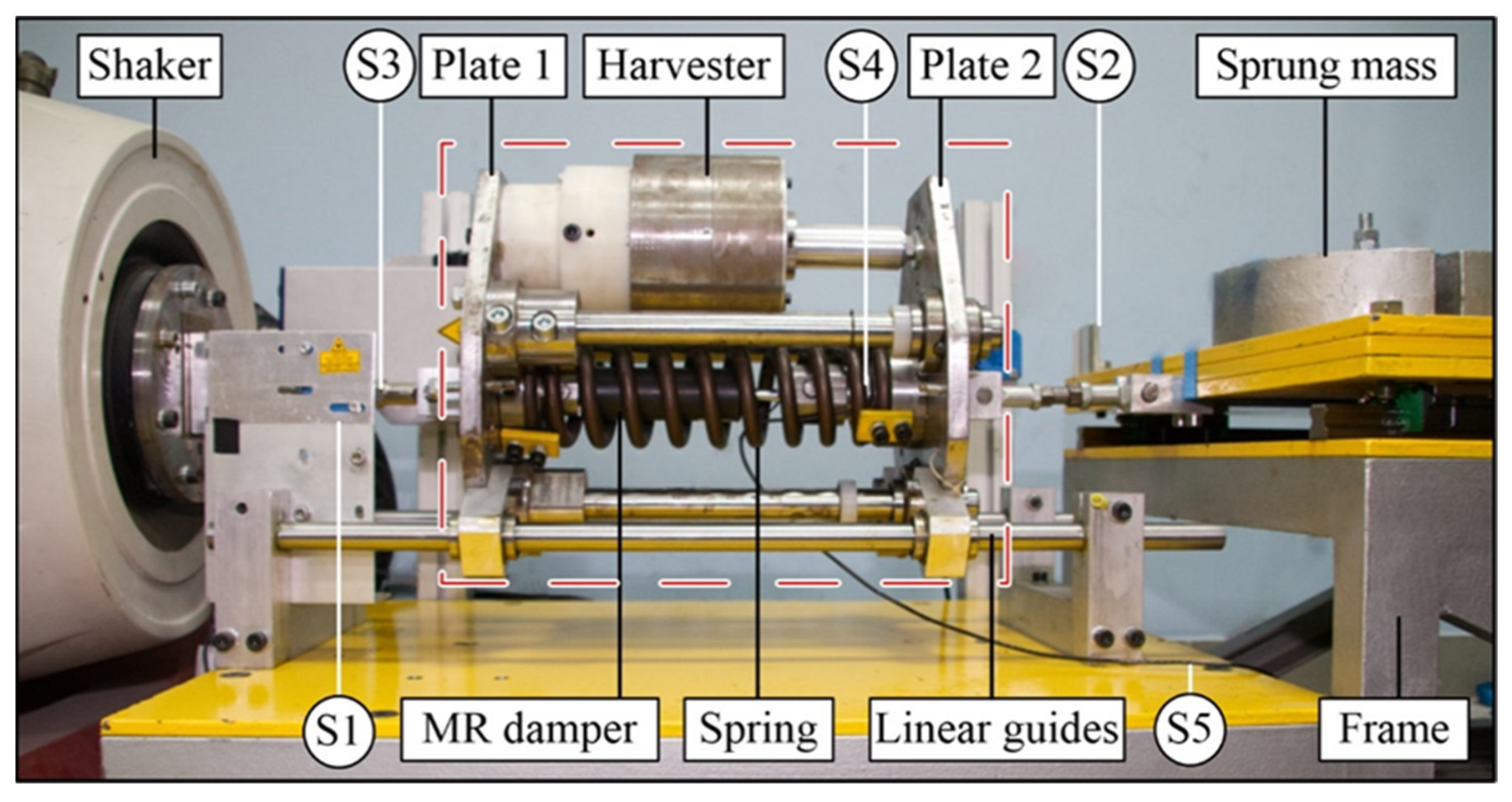
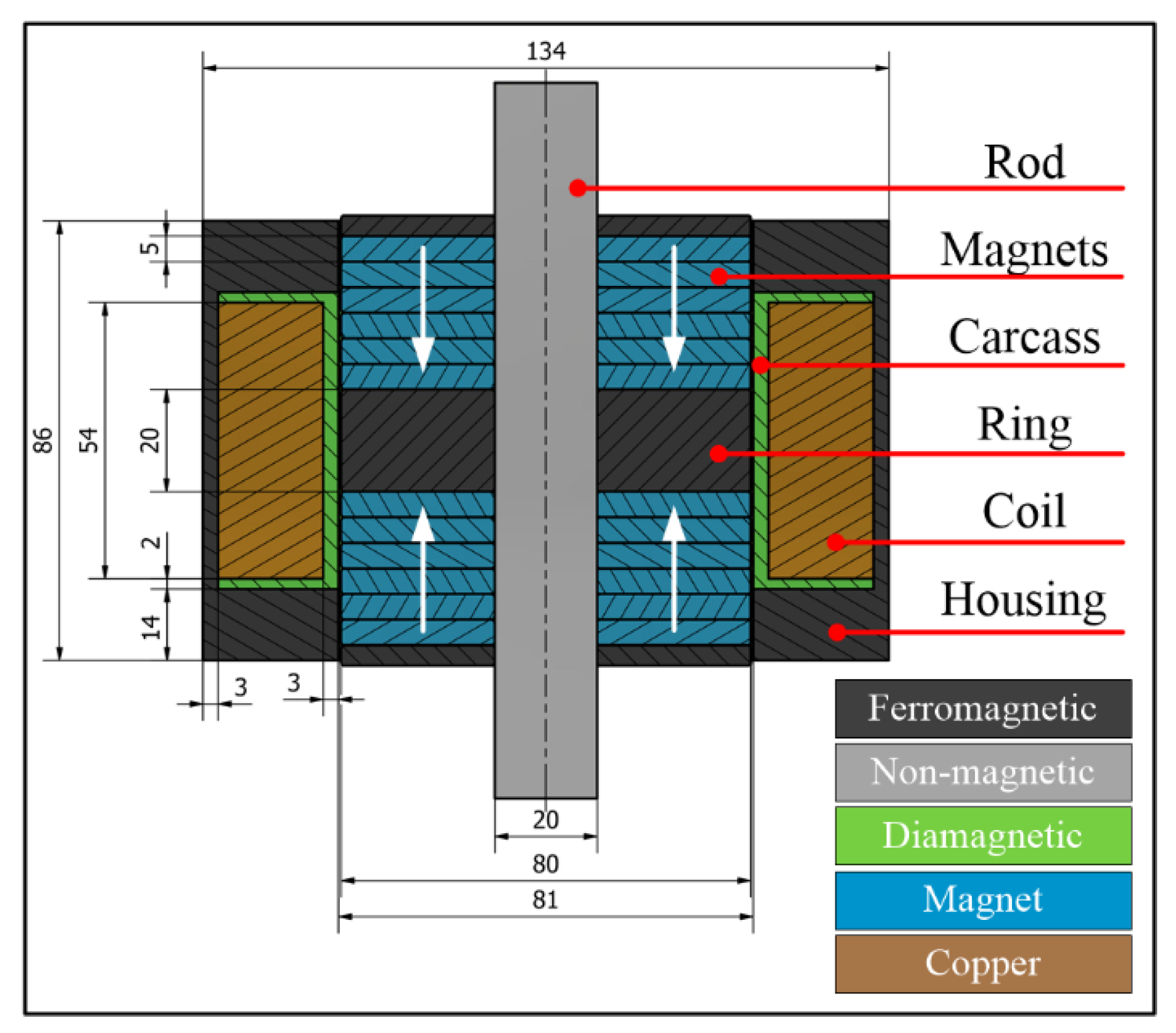


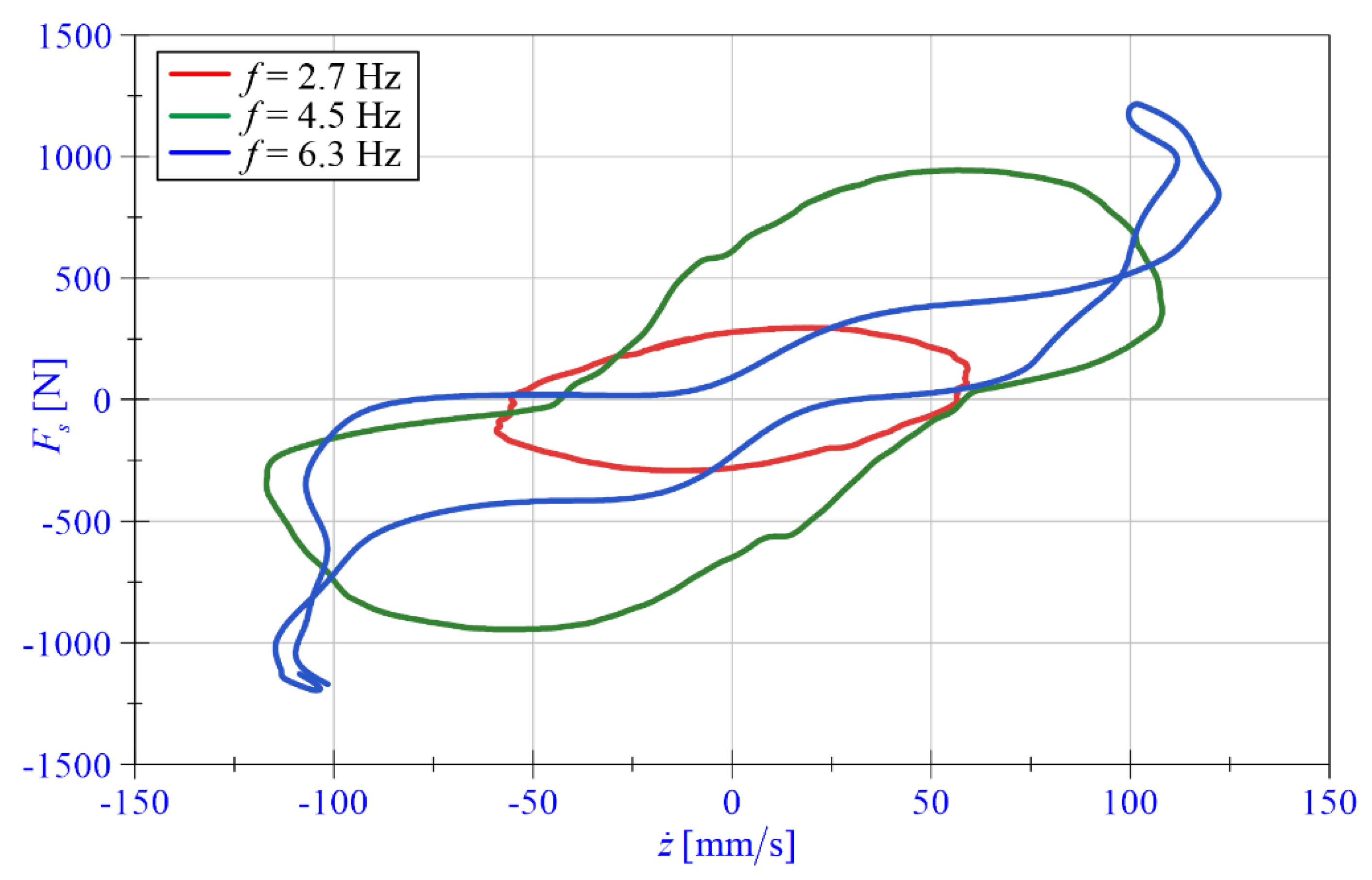
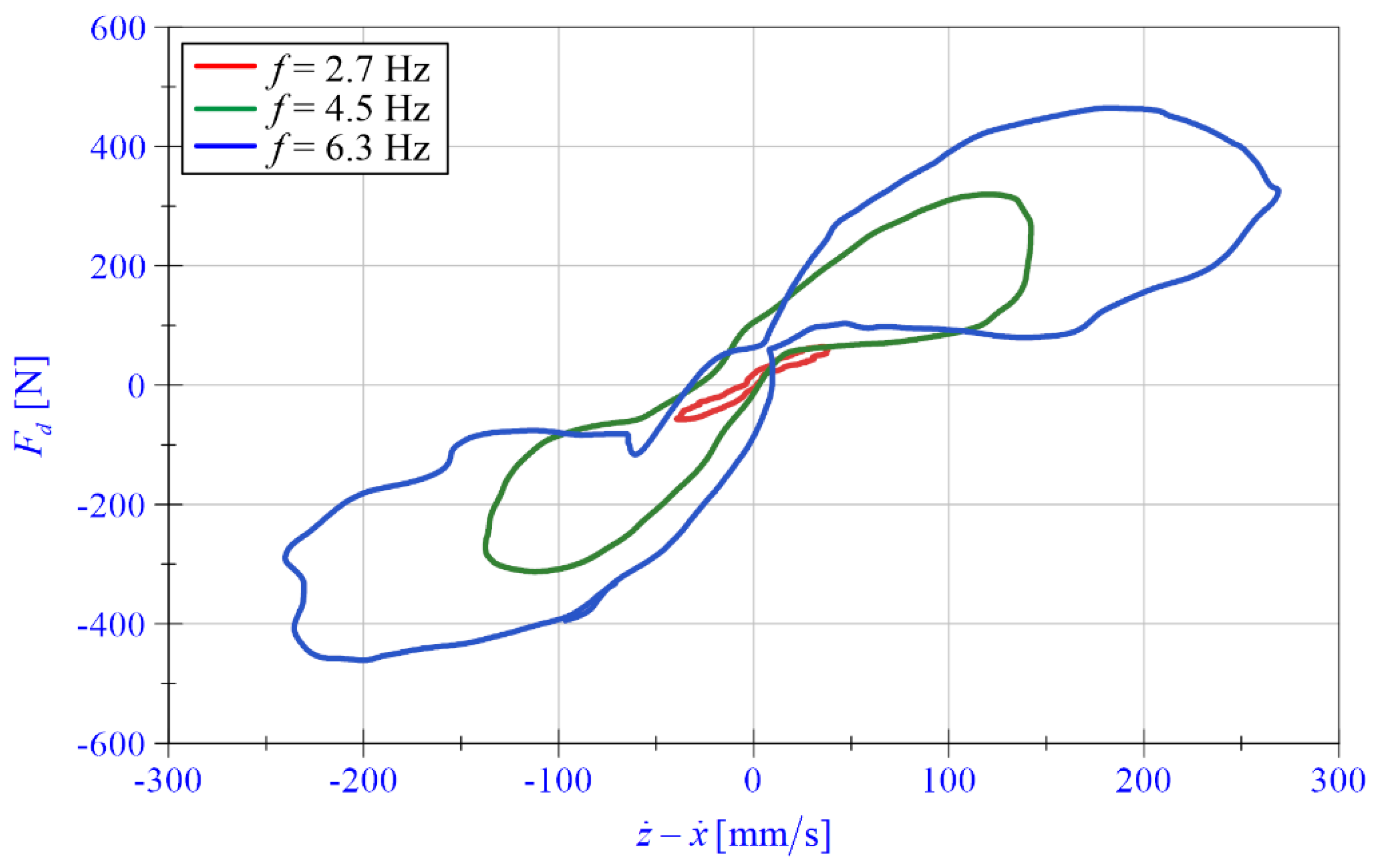



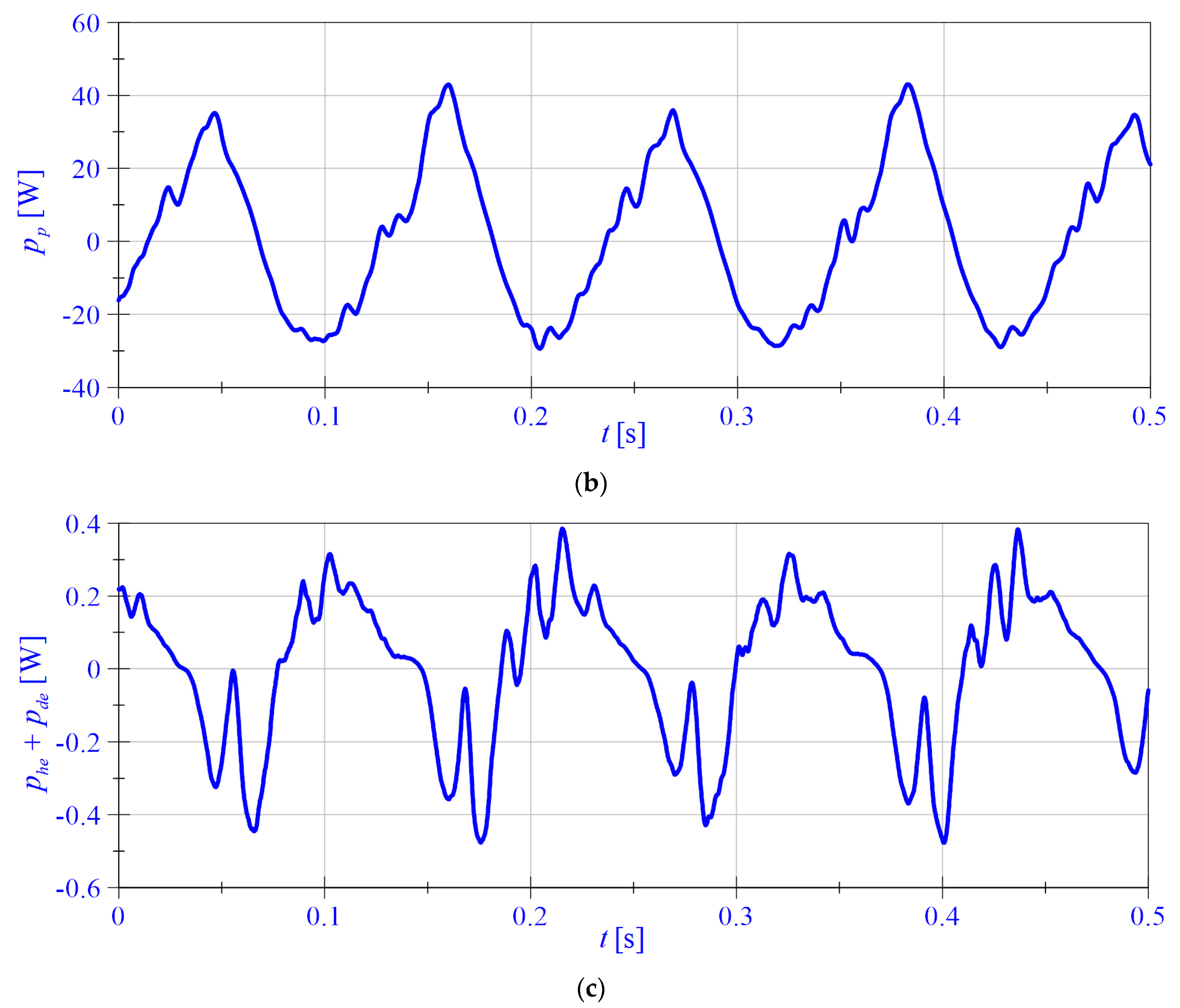
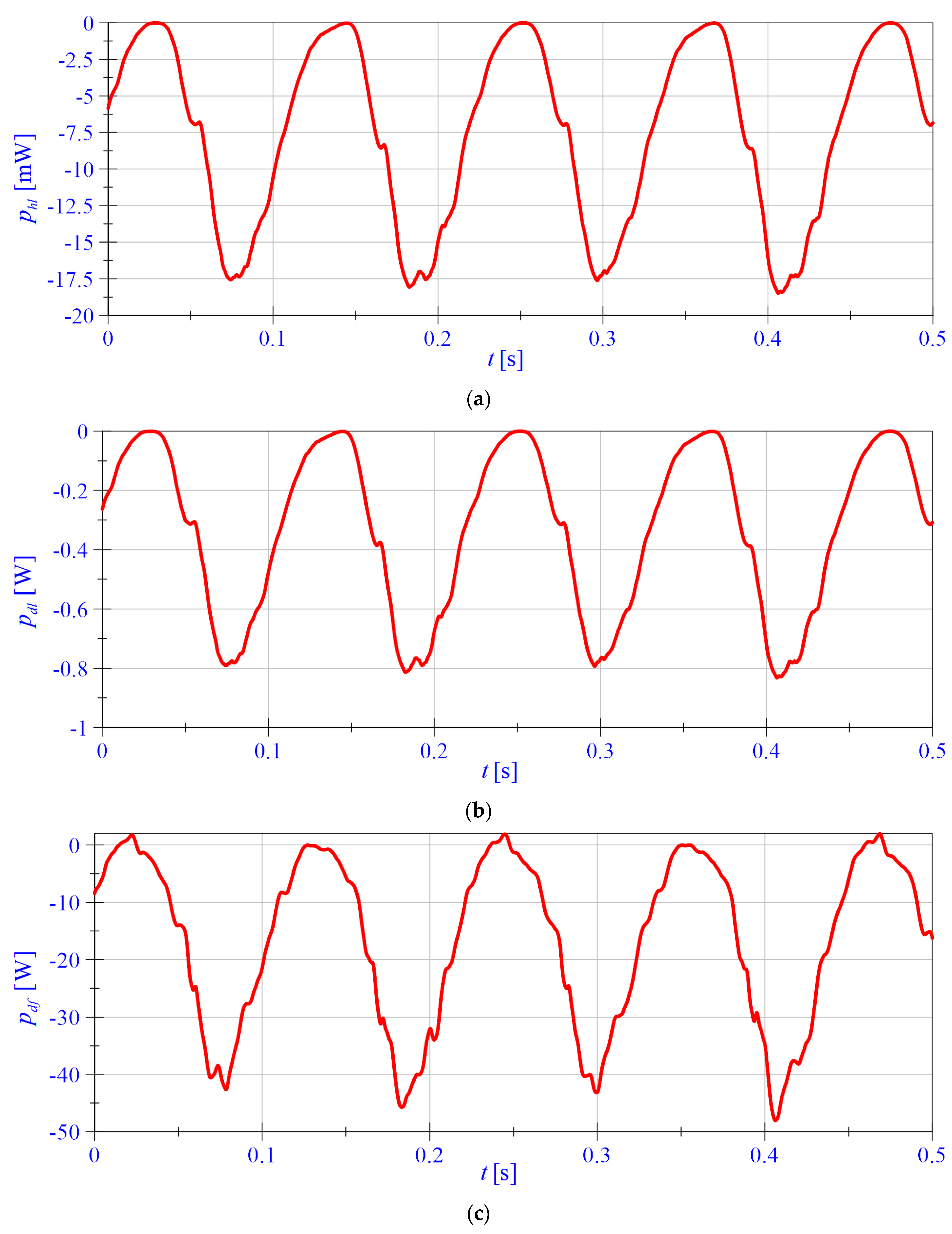

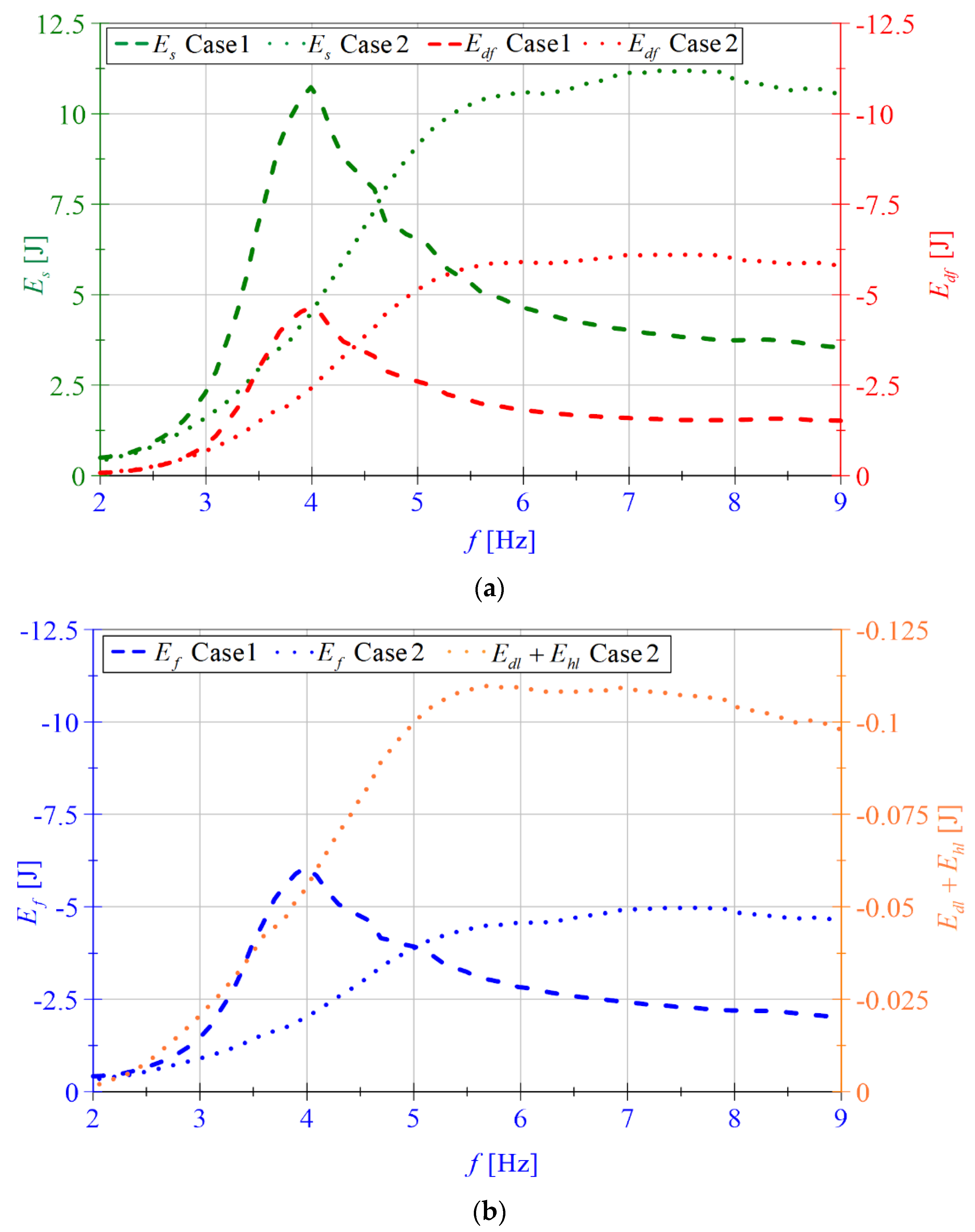
| Type of Power | Designation | Energy Flow Context |
|---|---|---|
| External power | Mechanical energy transmitted by the shaker | |
| Internal power | Accumulation of kinematic energy in the translation movement of the sprung mass | |
| Accumulation of potential elasticity energy in the spring | ||
| Accumulation of magnetic field energy stored in the harvester coil | ||
| Accumulation of magnetic field energy stored in the MR damper coil | ||
| Dissipated power | Energy losses caused by Joule Lenz’s conversion of electricity into heat in the harvester coil | |
| Energy dissipated by frictional forces in the elements guiding the harvester piston | ||
| Energy losses caused by Joule Lenz’s conversion of electricity into heat in the MR damper coil | ||
| Energy dissipated by frictional forces conversion into heat in the MR damper | ||
| Energy dissipated by frictional forces in kinematic pairs of bearings |
| Type of Energy | Equation | |
|---|---|---|
| Provided by the shaker | (12) | |
| Dissipated in the MR damper * | (13) | |
| (14) | ||
| Dissipated in the harvester * | (15) | |
| Dissipated by friction * | (16) | |
| Case 1 | |||||||||
- | |||||||||
| 2 | 16 | 1.21 | 14.96 | - | 1.0 | −0.1 | - | −0.92 | 0 |
| 2.7 | 57 | 1.76 | 30.75 | - | 3.4 | −1.0 | - | −2.35 | 0 |
| 3.8 | 184 | 3.43 | 43.47 | - | 37.2 | −16.2 | - | −21.0 | 0 |
| 4.5 | 52 | 2.17 | 40.49 | - | 36.6 | −15.3 | - | −21.3 | 0 |
| 6.3 | 210 | 0.63 | 39.12 | - | 27.7 | −10.8 | - | −16.9 | 0 |
| 9 | 256 | 0.26 | 42.83 | - | 31.8 | −13.6 | - | −18.2 | 0 |
| Case 2 | |||||||||
- | |||||||||
| 2 | 18 | 1.17 | 20.25 | 0.46 | 0.9 | −0.2 | −0.01 | −0.73 | 0 |
| 2.7 | 38 | 1.44 | 35.88 | 1.15 | 2.9 | −1.0 | −0.03 | −1.83 | 0 |
| 3.8 | 93 | 1.67 | 52.43 | 1.26 | 14.1 | −7.4 | −0.18 | −6.5 | 0 |
| 4.5 | 141 | 1.72 | 56.21 | 1.15 | 30.6 | −17.1 | −0.34 | −13.2 | 0 |
| 6.3 | 253 | 1.14 | 55.46 | 1.02 | 66.9 | −37.1 | −0.68 | −29.1 | 0.24 |
| 9 | 345 | 0.56 | 55.05 | 0.93 | 94.6 | −52.1 | −0.88 | −41.65 | 0.44 |
Publisher’s Note: MDPI stays neutral with regard to jurisdictional claims in published maps and institutional affiliations. |
© 2021 by the authors. Licensee MDPI, Basel, Switzerland. This article is an open access article distributed under the terms and conditions of the Creative Commons Attribution (CC BY) license (http://creativecommons.org/licenses/by/4.0/).
Share and Cite
Sapiński, B.; Orkisz, P.; Jastrzębski, Ł. Experimental Analysis of Power Flows in the Regenerative Vibration Reduction System with a Magnetorheological Damper. Energies 2021, 14, 848. https://doi.org/10.3390/en14040848
Sapiński B, Orkisz P, Jastrzębski Ł. Experimental Analysis of Power Flows in the Regenerative Vibration Reduction System with a Magnetorheological Damper. Energies. 2021; 14(4):848. https://doi.org/10.3390/en14040848
Chicago/Turabian StyleSapiński, Bogdan, Paweł Orkisz, and Łukasz Jastrzębski. 2021. "Experimental Analysis of Power Flows in the Regenerative Vibration Reduction System with a Magnetorheological Damper" Energies 14, no. 4: 848. https://doi.org/10.3390/en14040848
APA StyleSapiński, B., Orkisz, P., & Jastrzębski, Ł. (2021). Experimental Analysis of Power Flows in the Regenerative Vibration Reduction System with a Magnetorheological Damper. Energies, 14(4), 848. https://doi.org/10.3390/en14040848







